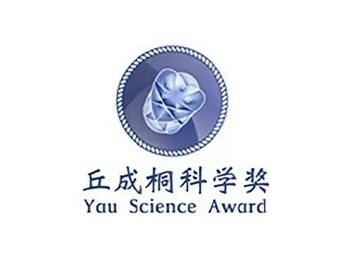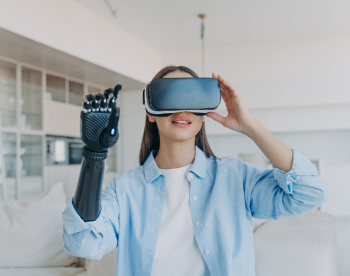Interpretation and enlightenment of the Nobel Prize in Physics
In 2024, with the American scientist John J. Hopfield and the British-Canadian scientist Geoffrey E. Hinton winning the Nobel Prize in Physics, the field of AI once again ushered in a highlight moment that attracted global attention.
This award is not only a recognition of their "fundamental discoveries and inventions in machine learning through artificial neural networks", but also a strong proof of the increasing status of AI technology in the scientific community.

2024 Nobel Prize in Physics winners John J. Hopfield (left) and Geoffrey E. Hinton (right)
This year's Nobel Prize in Physics often foreshadows the future development trend of the scientific field to some extent. With the increasing maturity and widespread application of AI technology, it can be foreseen that in the next few years, the field of AI is bound to usher in an unprecedented explosion!
So, for many middle school students who are passionate about AI,
how can they find their own differentiated path in this track full of competition and opportunities?
1. Understand the foundation and frontiers of AI
Geoffrey E. Hinton, an outstanding scientist who won the Nobel Prize in Physics and the 2018 Turing Award, is honored as the "Godfather of AI" and the "Father of Deep Learning".
His scientific research covers many frontier fields such as artificial intelligence, artificial neural networks, machine learning, pattern recognition, and speech recognition.

2. Deep learning
Machine learning, as an important branch of computer science, relies on data and sophisticated algorithms to help artificial intelligence simulate the human learning process. Neural networks, on the other hand, imitate the operating mechanism of the human brain by drawing wisdom from massive data, identifying and learning patterns. These two major technical pillars together build a solid foundation for artificial intelligence and provide an indispensable framework support for equipment and systems in various industries around the world.
With the leap-forward improvement of computer computing power and the advent of the big data era, deep learning ushered in its golden age in the early 21st century.
In 2006, Geoffrey Hinton proposed the landmark "Deep Belief Networks" (DBNs), a groundbreaking achievement that is widely regarded as the starting point of a new era of deep learning.

Geoffrey E. Hinton, 2024 Nobel Prize in Physics
Geoffrey Hinton's academic career is a vivid example. From his studies at Cambridge University to his doctorate in artificial intelligence at Edinburgh University, to his pioneering contributions in the era of deep learning, every step embodies his deep understanding and unremitting pursuit of AI technology.
Middle school students can continuously enrich their knowledge system by reading relevant books, taking online courses (such as the neural network course that Hinton taught on Coursera), and paying attention to industry trends.
In addition to theoretical learning, it is also very valuable to actively engage in the exploration and practice of AI scientific and technological innovation projects. This can not only deepen students' understanding of AI technology, but also cultivate innovative thinking and problem-solving skills.
For example, students can try to develop an AI-based intelligent assisted learning system and use machine learning algorithms to optimize learning resource recommendations; or study the application of AI in the field of environmental protection, such as monitoring garbage classification through image recognition technology; they can also explore the combination of AI and art to create infectious and personalized works of art.
In addition, middle school students can also participate in the Regeneron International Science and Engineering Fair, which is known as the "Little Nobel Prize". Sponsored by Regeneron Pharmaceuticals, also known as Regeneron
ISEF, is a global heavyweight youth scientific research and innovation competition. ISEF is open to middle school students in grades 9 to 12 around the world, covering almost all subjects, including 22 sub-disciplines such as physics, chemistry, computer science, engineering, social sciences, and biology.
Through these scientific and innovative projects, they can not only apply what they have learned to practice, but also discover new problems and challenges in practice, thereby inspiring more innovative inspiration.
More importantly, these projects can also lay a solid foundation and practical help for their future studies and college applications.
3. Interdisciplinary integration, broaden horizons

Geoffrey E. Hinton, "AI Godfather" and "Originator of Deep Learning".
The success of "AI Godfather" Hinton is not limited to the field of AI. His research also involves multiple disciplines such as psychology and statistics. This tells us that to stand out in AI science and technology, interdisciplinary integration is an important direction and a new trend in the future direction of science and technology!
Try to combine AI technology with other disciplines, such as applying AI to many fields such as computer science, mechanical electronics, biology, medicine, physics, psychology, art and humanities, and explore new research methods and application scenarios. This interdisciplinary way of thinking will help them go further on the road of scientific research in the future.
4. Practice makes perfect, do science and technology with your own hands
Theoretical knowledge learning is important, but practice is the only criterion for testing the truth. Actively participate in various science and technology projects and improve your skills through hands-on practice.

For example, you can try to develop a simple conversational digital assistant, a simulation system for self-driving cars, or use AI technology for image recognition, speech recognition, etc. These practical projects can not only help them better understand the principles and applications of AI technology, but also exercise their innovative thinking and problem-solving skills. See more science and technology competitions suitable for teenagers here.

5. Maintain curiosity and keep learning
Especially for students who are still in middle school, they should maintain curiosity about science and technology and keep learning.
The AI field is a rapidly developing field, with new technologies and applications emerging in an endless stream. Always keep an eye on new technologies and new applications, keep learning new knowledge, and improve your skills. Only in this way can we keep moving forward on the road of scientific innovation in the future and find our own differentiated path.
Embark is an educational institution focusing on customized scientific research training for teenagers. The core team members are all master's and doctoral graduates from prestigious American universities. Through customized scientific research training, it has guided students to win nearly 1,000 awards in major global scientific research competitions (such as Regeneron ISEF, Regeneron STS and other national competitions), and successfully entered world-renowned universities such as Harvard, Stanford, Princeton, Oxford, and Cambridge. If you are interested in scientific research, you can learn about the scientific research Embark Exploration Program, where you will conduct one-on-one academic projects with expert mentors from world-renowned universities. If you are interested in international STEM competitions, you will receive guidance from Embark's mentors with a strong academic background, who will lead you to achieve good results in international competitions and gain the opportunity to enter Ivy League schools. For more detailed information, please contact Embark.



